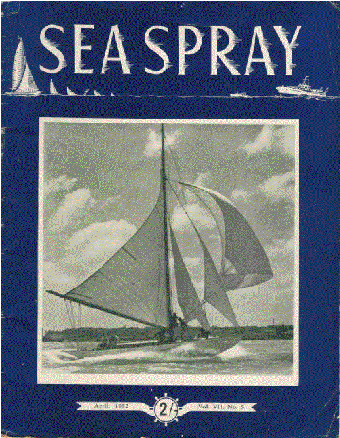|
THE FIRST LITTLE JIM
(1901-1933)
Little Jim might be an unusual name for a yacht. The name has
its origins in 1900 when an Italian f isherman, Charles Vieri
sought finance from a publican to order a schnapper boat f rom
Logan Bros. to clinch the deal, Vieri of fered to name the vessel
after the financier’s three year old son, Jim Malloy. A
photograph of the boy appropriately clutching a greyhound is
displayed in the main cabin on board the second Little Jim. Jim
Malloy grew up to become a prominent Auckland lawyer.
Schnapper boats w ere designed to sail out into the Hauraki Gulf
to catch a bilge load of schnapper and sail home quickly to the
market before the catch spoilt before the days of ice and on
board refrigeration,. While mullet boats sailed up the Harbour,
the schnapper boats w ent out into the Hauraki Gulf .
The advent of efficient marine engines around 1910 made schnapper
boats obsolete and uneconomic for fishing. Many, including the
first Little Jim, were converted to pleasure craf t for cruising
and racing for which they were well suited. Other well known
converted schnapper boats include Victory (still racing on the
Waitemata under it’s sail number, A8), and reputedly built
f rom the same moulds as the f irst Little Jim,
Rangi (lost on Norfolk Island in 1951), Cooee (now cruising the
Pacific), and White Heather (lost on a reef in Moorea in 1937).
As schnapper boats w ere specif ically designed for speed, the
most modern designs of the time were employed, designs such as
Watson’s Britannia and Herreshoff ’s Gloriania. Spoon
bows and wide counter sterns are typical features.
When fishing boats were f irst registered Little Jim wore AK
1 on her sail. After conversion to a pleasure yacht she was registered
as number 41 when the f irst permanent sail numbers were introduced
in 1914 and in 1922 with the introduction of alpha numeric sail
numbers, she was registered as B7.
She competed in the Auckland Anniversary Day Regattas with other
fishing yachts in the open f ishing boat race, often as the scratch
boat, and won the 1903, 1906, and 1907 Regatta races.
Viere sold Little Jim in 1907 to a T. Moody who continued
to fish in her until he in turn sold her in March 1910 to J.
M. Tregaskis. Tregaskis purchased her with the intention of fitting
her out for cruising but f irst had to scrub out 10 years of
accumulated fish debris and smells. The New Zealand Yachtsman
magazine reported some excitement at the prospect of her joining
the racing f leet. Unfortunately this was not to occur until
several years later.
Tregaskis spent the summer and w inter of 1910 scrubbing her
out and fitting her for cruising, but as the next ow ners continued
the work the following season, the changes must have been unf
inished. Tregaskis had renamed her Kittiwake, although this change
of name was short lived. She sailed at least one known race under
Tregaskis’s ownership w ith the North Shore Sailing Club
on 19 November 1910.
Tregaskis sold her in June 1911 to E&W Feltham, brothers
who continued her conversion by hauling her out at Stanley Bay
in the w inter of 1911, stripping her out, fitting a new mast,
two new bunks, new sails, and several new lockers. By November
she was back in the water under her old name "Little Jim"
in a state The New Zealand Yachtsman described as “a marvellous
transformation". The Felthams had a fright when she dragged
her moorings off Devonport shortly after relaunching in a December
southwest gale, although no damage was done. The Felthams were
cruisers rather than racers which did not go unnoticed by the
New Zealand Yachtsman which commented in February 1912 “it's
a pity so good a boat does not
regularly compete".
She continued to be seen cruising the gulf and regularly seen
hauled up at Queens Parade Devonport for annual maintenance.
In 1914 her cabin top w as raised and a proposal to send her
to Wellington did not eventuate. The following year internal
ballast was removed and despite wartime shortages 17cwt of lead
was added to her keel giving her 8” more draft and improved
performance.
From May 1916 until she sold in September 1920, she was regularly
advertised for sale. With a large part of local sailors serving
overseas, it is not surprising she did not sell until after the
return of servicemen at the end of the war.
Little Jim w as purchased by R. L. Stewart who sold her again
3 months later on 20 July to a partnership of Barney Goldwater
and a Mr Denby who immediately began to seriously race her. Stewart
may have been a broker or received her as part of a trade which
could explain his short period of ownership. |
